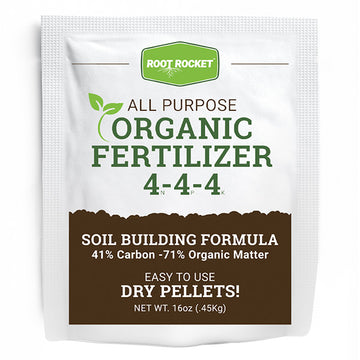The Eastern Redbud or Cercis canadensis is a stunning spring bloomer that is native to North America. This deciduous tree grows from southern Canada to northern Florida to California. In fact it grows in almost all of the continental US except for the very coldest and warmest regions! This beauty is an absolute gem that is hard to forget after you see one for the first time.
 With vivid magenta purple flowers that pop up in clusters all over the branches and even the trunk the Eastern Redbud is truly stunning. I remember the first time I saw an Eastern Redbud. I was completely enamored and almost shocked at these unique and special sweetpea-like blooms! I watched that beautiful tree bloom away and as the blooms faded the leaves emerged. Stunning, heart-shaped, shiny, red leaves erupted in spring. And as the leaves grew to full size they became dark green hearts about 4 inches wide. In fall the leaves turned lemon yellow. The graceful habit and branching structure of the Eastern Redbud and attractive bark add beauty to the winter landscape despite bare branches.
With vivid magenta purple flowers that pop up in clusters all over the branches and even the trunk the Eastern Redbud is truly stunning. I remember the first time I saw an Eastern Redbud. I was completely enamored and almost shocked at these unique and special sweetpea-like blooms! I watched that beautiful tree bloom away and as the blooms faded the leaves emerged. Stunning, heart-shaped, shiny, red leaves erupted in spring. And as the leaves grew to full size they became dark green hearts about 4 inches wide. In fall the leaves turned lemon yellow. The graceful habit and branching structure of the Eastern Redbud and attractive bark add beauty to the winter landscape despite bare branches.
The Eastern Redbud grows from 20 to 30 feet tall and wide at maturity. This tree grows at a fast rate of about 2 feet per year under ideal conditions.
Eastern Redbud Care
As native plants, Eastern Redbuds are very easy to grow and maintain.

Recommended Growing Zones
The optimal planting zones for the Eastern Redbud are 4 to 9.
Sun
These trees grow well in full sun or part shade. However you will get the heaviest blooming from trees in full sun.
Soil
Redbuds are adaptable to any soil, including clay as long as it isn't saturated. The Eastern Redbud even tolerates both alkaline and acidic soils. Redbuds will grow best in a moist, but not wet soil.
Watering
After establishment, this redbud is drought tolerant. However, in extended drought periods this tree will benefit from a weekly deep watering. Adding a layer of mulch about 2 to 3 inches thick around the base of your Redbud will protect the roots and help them retain moisture. Be sure the mulch doesn’t touch the trunk as this increases the chances of pests and disease. Space the mulch about 1 inch from the trunk.
Fertilizing
Fertilize in early spring and when planting with a balanced slow release fertilizer to give your tree a boost.
Pruning
Redbuds don't generally require pruning, but if needed, prune immediately after blooming has ceased to remove any dead, dying, crowded or crossed branches. Pruning in winter can cause bloom loss.
Pests and Diseases
There are not many serious pest and disease issues with Eastern Redbuds, but weakened trees can definitely be more susceptible to pests and diseases. Wet and humid summers can bring about fungal issues. Just remember most of these issues only affect the leaves and will not kill or even harm your tree. It is more of a cosmetic issue than anything. When the leaves shed in fall the disease is gone from the tree. Some fungal spores can overwinter. So cleaning up your landscape by raking and disposing of the leaves can potentially prevent the spread of disease the following year.
Eastern Redbud in the Landscape

Redbud Trees can be planted almost anywhere in your yard since they can tolerate just about any conditions. Use this tree as an ornamental flowering tree and a shade tree all in one. The Eastern Redbud attracts butterflies and hummingbirds which is a great beauty bonus!
Often referred to as an understory tree, the Eastern Redbud doesn’t get nearly the credit it should. This tree is a showpiece! It makes a lovely focal point in your landscape and is even small enough for a mixed bed.
The Eastern Redbud looks great planted in a group of three in the corner of your yard. Plant a row of redbuds for huge color and impact that your neighbors will admire! Add some uplights and they will even look great at night!
Eastern Redbud: Interesting Facts
2. The roots and bark were used before modern medicine to treat a variety of ailments. Native Americans treated whooping cough with a tea made from the boiled bark of the Eastern Redbud. Symptoms of cold and flu, like congestion, vomiting, diarrhea, and fever were treated with the roots and bark. Dysentery was even treated with an extract made from the bark.
3. George Washington seems to have become enamored with Eastern Redbuds just like me! He actually transplanted them from the woods nearby to his gardens at Mount Vernon.
4. Redbuds tolerate black walnut, fire, and deer. Even though deer may nibble tender branches the Redbud is not negatively affected.
5. Redbuds are small, but mighty. The deep taproot allows this hardy tree to withstand storm, ice, and wind damage.
The Eastern Redbud is a pretty amazing tree. And you just thought those pink-purple flowers that announce the arrival of spring were cool! Find a spot in your landscape for an Eastern Redbud and you will be rewarded year-round for years to come! Check out our selection of Eastern Redbuds.
Be sure to browse our Redbud Collection for additional options!

